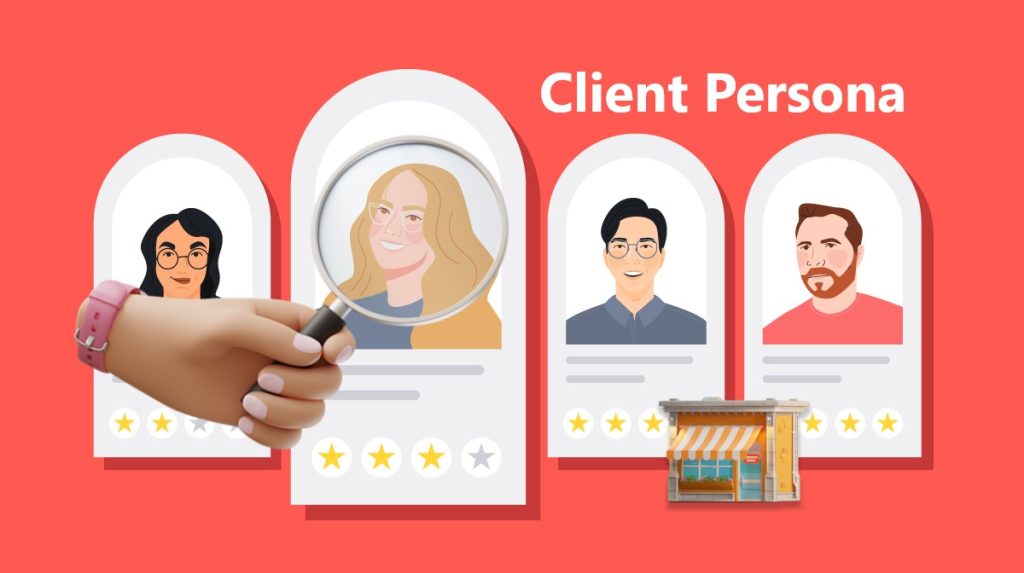In the realm of modern marketing and business strategy, understanding your audience is paramount. Developing a client persona is not just an activity; it’s a strategic foundation that significantly enhances the precision of marketing, sales, as well as product development efforts. This detailed character sketch serves as an archetype for major segments of your market, enabling you to tailor your efforts to the specific needs, behaviors, and also preferences of different customer groups.
Understanding Client Personas
A client persona is a detailed representation of your ideal customer based on market research and also real data about your existing customers. This persona encompasses demographic and psychographic characteristics, combining age, occupation, interests, as well as lifestyle, along with behaviors, motivations, and goals. The essence of developing a client persona lies in its ability to bring data to life, allowing businesses to engage with their audience on a more personal and effective level.
Strategic Importance of Client Personas
Developing a client persona offers a multifaceted advantage. It not only sharpens marketing messages but also aligns product features with the actual needs of consumers, and also optimizes customer interactions across the board. By deploying well-crafted personas, businesses can achieve a deeper connection with their audience, fostering loyalty as well as driving engagement.
Comprehensive Guide to Developing a Client Persona
The process of creating a client persona is meticulous and involves several crucial steps. Each step is designed to deepen your understanding of your audience, ensuring that the personas you create are as accurate and useful as possible.
Gather Comprehensive Data
The first step in developing a client persona is to gather a wide array of data. This includes basic demographic information such as age, gender, and location, as well as more nuanced data like education, income levels, as well as professional fields. Psychographic information, which details lifestyle, values, and attitudes, is equally important. Methods for gathering these insights include customer surveys, interviews, and also analysis of existing customer data from CRM systems.
Identify Needs and Pain Points
To make your personas useful, identify common needs, challenges, and pain points that your customers experience. Analyzing customer feedback, support calls, and online reviews can provide real insights into what your customers value most and what obstacles they encounter with your products or services.
Segment by Behavior and Preferences
Not all customers will fit a single mold, so segment them based on distinct behaviors and preferences. These segments might include product preferences, purchasing behavior, loyalty to the brand, and also preferred communication methods. By acknowledging these differences, you can develop multiple personas that represent various facets of your customer base.
Craft Detailed Persona Profiles
For each identified segment, develop a detailed persona. This should include a fictional name as well as a set of characteristics that embody the segment. Detail their job roles, family life, education level, and include quotidian details that bring the persona to life. This might also include their media consumption habits, shopping preferences, and social media activity.
Apply and Refine the Personas
With the personas developed, the next step is to integrate them into your business strategy. Use them to tailor marketing campaigns, product development, and customer service strategies. Over time, continually refine your personas based on new data and market trends to ensure they remain relevant and effective.
Advantages of Effectively Developed Client Personas
The benefits of developing a client persona extend across the business spectrum—from enhanced marketing precision to improved product offerings and also superior customer service.
Enhanced Targeting and Personalization
With a clear understanding of who your customers are, you can craft messages that speak directly to their interests and needs. This leads to more effective as well as engaging marketing campaigns. Personalization isn’t just preferred by customers; it’s expected, making this a critical advantage.
Informed Product Development
Knowing your personas’ needs and pain points allows you to design or tweak products that more effectively meet those needs. This alignment often results in higher user satisfaction and better market performance.
Optimized Customer Experiences
A persona-driven approach enables you to design customer experiences that are more likely to satisfy and also delight your audience. From the website design and navigation to customer service interactions, tailoring these touchpoints based on persona insights can significantly enhance customer satisfaction and loyalty.
Streamlined Communication Strategies
When you know your personas well, you can determine the most effective channels as well as tactics for communicating with them. This might influence the selection of social media platforms, email marketing approaches, and even the design and content of your advertising.
Implementing Client Personas Across the Business
To fully leverage the power of client personas, their use must be integrated across various departments. Marketing teams can use personas to target ads and content more effectively. Sales teams can use them to better understand the needs and objections of potential customers. Product teams can use them as a guide for feature development and user experience design. Even customer service can benefit by anticipating the concerns and preferences of different persona groups.
A Strategic Necessity
Developing a client persona is a strategic necessity in today’s market landscape. It provides a rich, detailed understanding of who your customers are, which is invaluable in crafting targeted, effective business strategies. A business that understands its customers at this level is better equipped to meet their needs, adapt to their changing preferences, and also build lasting relationships. In the end, client personas are not just about selling more—it’s about connecting better.


